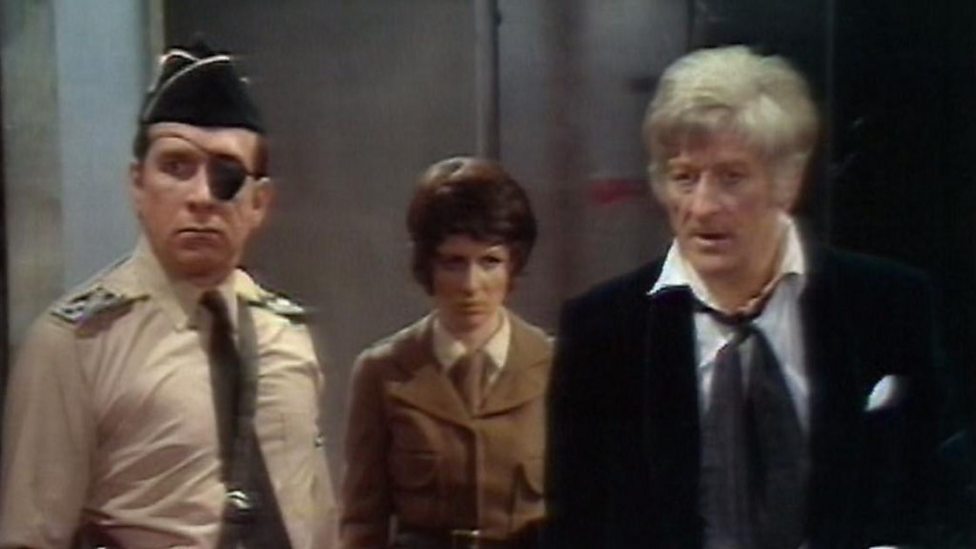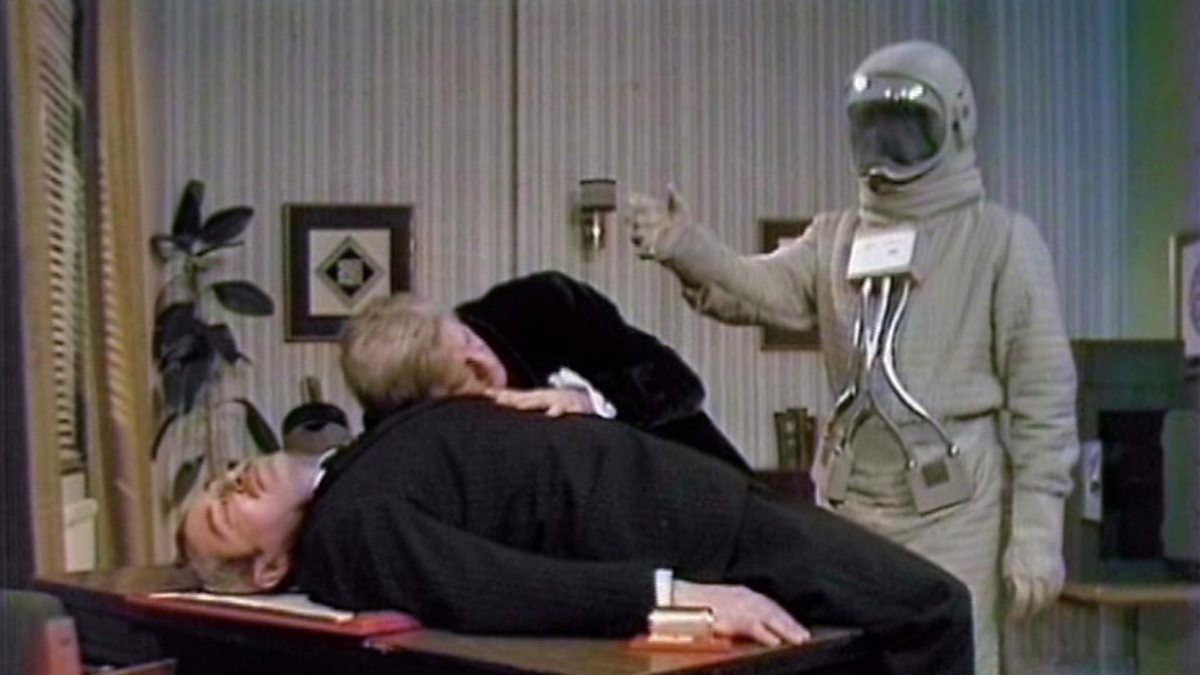Six-parter, four-parter or one-parter? We look back at some of the finest adventures in time and space and ask: What is the perfect length for a Doctor Who story?

Between 1963 and 1989, a typical Doctor Who story would either comprise of four parts or six parts. There were a few notable exceptions: pacing issues made 1964’s ‘Planet of Giants’ the very first three-parter in Who history, and other curveballs like ‘The Daleks’ Masterplan‘ and ‘The War Games’ saw the first (and only) 12 and 10 part adventures spring up. Plus, ‘Invasion of the Dinosaurs’ is actually a five episodes plus a one-parter, depending on how you interpret the titling.
In a way, it doesn’t really matter – the most important thing is how well the Doctor Who story is told. Ideally, a Doctor Who story will have an appropriate amount of episodes relative to its length, and one could argue that some tales like ‘Doctor Who and the Silurians’ and ‘Inferno’ (both at seven episodes apiece) work well, despite their extended durations. Even ‘The War Games’ at its sprawling 10 instalments feels appropriately-paced, especially as it allows for a whole episode to be given over to the unveiling of the Time Lords.

But interestingly, these story lengths were due to necessity. With ‘The War Games,’ there was a 10 week gap in the production schedule owing to the cancellation of ‘The Prison in Space,’ and so the writers Terrance Dicks and Malcolm Hulke had to devise a single tale that could fill the schedules. The fact that the adventure works so well is down to their writing ability, rather than them intentionally setting out to tell an epic Doctor Who story in 10 parts. Because, historically, the longer Doctor Who adventures tended to be weaker.
This is why the production team of Doctor Who Season Eight tried to stick to four-parters where possible. Season Seven had comprised (largely) of seven episode stories, and tales like ‘The Ambassadors of Death’ demonstrated that Doctor Who didn’t always lend itself to long-form storytelling. And these serial lengths had been purely budgetary; the BBC recognised that it was cheaper to tell one story over seven parts because it could use the same cast and the same sets rather than start afresh for yet another four part adventure.

At the same time, the show had to sustain the interest of its viewers, and this was harder to achieve with a longer Doctor Who story, particularly if it was treading water. The four-parters were, by and large, tighter and punchier. And whilst Doctor Who Season Eight may have been more expensive to make, it is highly-regarded among Doctor Who fans, boasting such classics as ‘Terror of the Autons‘ and ‘The Claws of Axos,’ both of which had four episodes apiece.
Indeed, some of the greatest Doctor Who stories of all time have been four episodes in length, such as ‘The Tomb of the Cybermen,’ ‘The Ark in Space,’ ‘Terror of the Zygons,’ ‘The Caves of Androzani’ and ‘Remembrance of the Daleks,’ to name a few.
To say that they are successful solely because of their length, though, would be slightly disingenuous. For every ‘Pyramids of Mars’ there is a ‘Genesis of the Daleks’ – a six-parter that is frequently recognised as the greatest Doctor Who story of all time, or one of them. And then there is ‘The Power of the Daleks‘ – perhaps the most sought-after missing Doctor Who story of all time that many fans would happily donate body parts to recover.
But the earlier point of retaining viewer interest remains. The production team were particularly conscious of this in the new era of Doctor Who that launched in 2005, which saw the introduction of (gasp!) one part adventures for the first time in the series’ history (unless you count ‘Mission to the Unknown’ or 1974’s ‘Invasion.’) The battle to stop people from ‘flicking over to the other side’ was intense, and it really was a battle; when you look back at ‘Rose,’ it is staggering how much exposition there is in the first three minutes alone, so fast-paced is the storytelling.
That being said, there were still two-parters in this new era of Who, but even these gave birth to a new kind of Doctor Who story – a two-parter that… wasn’t. That is, a Doctor Who story told in two parts which were vastly different from one another. Think of the visual difference between ‘The Time of Angels’ and ‘Flesh and Stone,’ or the geographical difference of ‘Under the Lake’ and ‘Before the Flood.’ Or even ‘The Girl Who Died’ and ‘The Woman Who Lived’ which are so worlds apart (literally) that they can scarcely be classed as a two-part Doctor Who story.

The aim with this kind of storytelling was to tick two boxes – tell a longer-form adventure, whilst also providing something different enough with the second instalment to keep the story fresh. This was a type of Doctor Who story that continued into the Chris Chibnall era; for example, the two parts of ‘Spyfall’ are vastly different from each other, and 2021’s Doctor Who: Flux is more like a movie anthology than a single story, even though the episodes are linked.
Trying to settle on the perfect length for a Doctor Who story, therefore, is tough. In the Classic era, four-parters tended to be safer, even though they were more expensive. There were some popular longer adventures like ‘The Talons of Weng-Chiang’ and ‘The Seeds of Doom,’ but even they didn’t have the tightness of shorter tales like ‘The Deadly Assassin.’

And in the New Who era, there have certainly been more popular single stories than two-parters, but one has to remember the titanic impact of longer tales like ‘The Empty Child’ and ‘The Doctor Dances,’ as well as ‘The Stolen Earth’ and ‘Journey’s End.’
But when we look at the 2014 Doctor Who Magazine poll, the one-parters are the clear winners with ‘The Day of the Doctor‘ and ‘Blink’ taking the top spots. So the answer is simple.
That is, until you realise that ‘The Day of the Doctor’ is 77 minutes long and therefore the equivalent of a three-part Doctor Who story, at which point the whole system is thrown into chaos and you’re back at square one.
So over to you, Lovarzi reader! What do you think is the perfect length for a Doctor Who story? And which is your favourite adventure of all time? Let us know in the comments below.









Leave a Reply